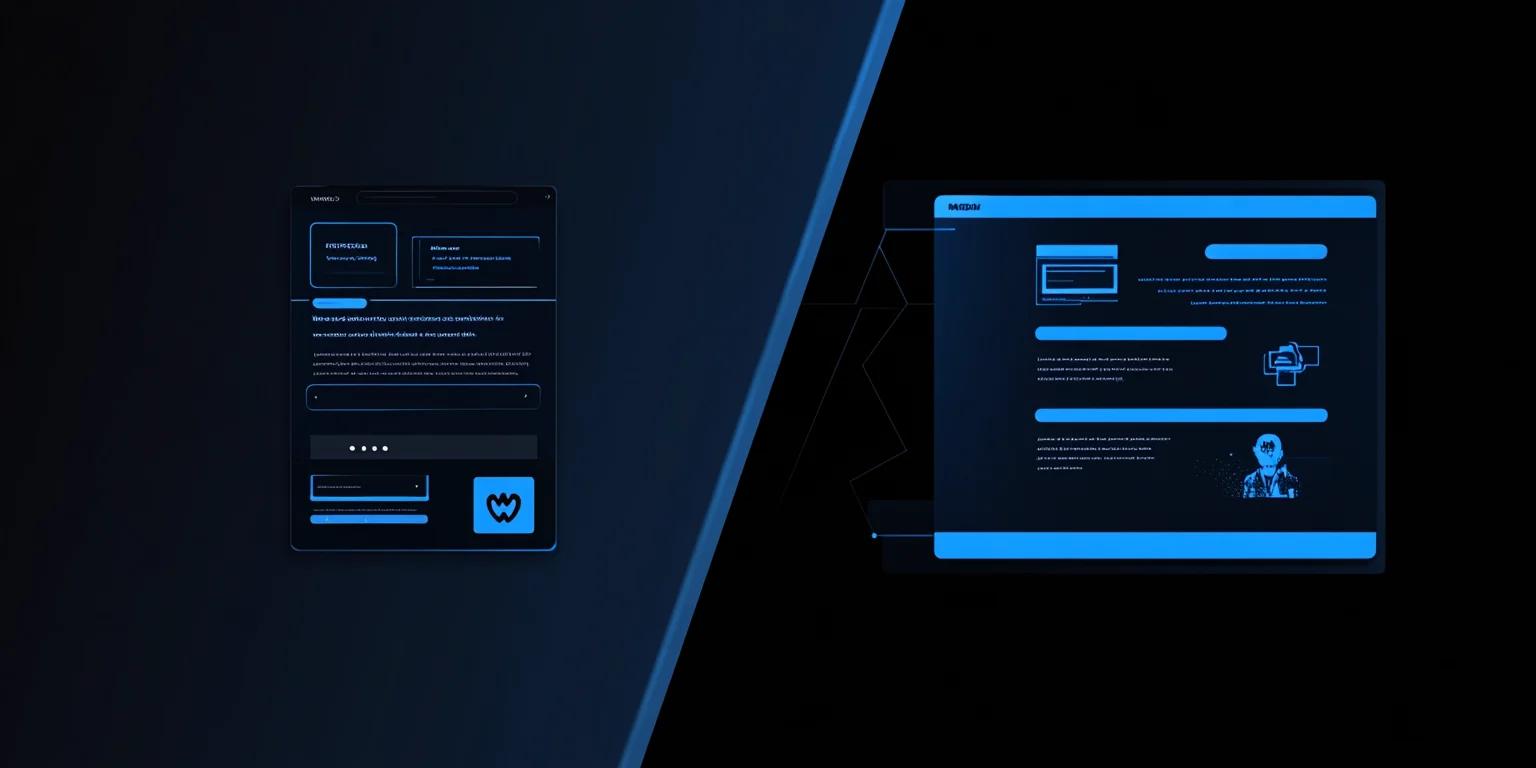If you're wondering how to migrate from contentful, this guide is for you! WordPress to Contentful might feel like you're about to embark on a complex adventure, but it’s a journey that can truly elevate your content management game. If you're fed up with the constraints of traditional CMS platforms and crave a more adaptable solution, you’re in the right place. This guide is here to be your trusty sidekick, walking you through the process step by step.
WordPress to Contentful Migration
If you're scratching your head, wondering why you should even consider this migration, let's unpack it. The magic lies in the headless CMS architecture, which promises better performance and scalability. By shifting to Contentful, you're setting yourself up to deliver content effortlessly across multiple platforms, keeping everything smooth and seamless.
For a real-world example of how this migration can benefit your business, check out a WordPress to Contentful case study. This guide is your roadmap, breaking down the entire migration process from exporting data to transforming it for Contentful’s content model. We’ll cover everything you need to know to make this transition as smooth as possible.
What Does the WordPress to Contentful Migration Involve?
- Migrating from WordPress to Contentful means transferring your content to a more flexible environment. This move lets you break free from the traditional CMS constraints and embrace a headless CMS approach.
- The process includes exporting your data from WordPress and reimagining it within Contentful's content model. This step is vital to maintain the structure and integrity of your content throughout the transition.
- Key steps in this migration include extraction, transformation, and import of content. These are crucial to ensuring your content is accurately represented in its new home, Contentful.
- By making the switch to Contentful, you’re not just migrating content; you’re shifting to a headless CMS architecture that offers more flexibility to serve content across various platforms efficiently.
For a detailed checklist on how to ensure a successful content migration, be sure to explore these essential steps.
Best Practices for WordPress to Contentful Migration
Conduct Thorough Content Audit and Planning
Start with a comprehensive audit of your existing content. Identify what content you currently have, including posts, pages, media, and custom post types. This inventory helps you understand the scope of your migration and decide what content is worth keeping.
Planning involves setting clear objectives for the migration ensuring that every piece of content aligns with your current business goals. This step reduces clutter and focuses your efforts on valuable content.
Design a Well-Structured Content Model in Contentful
Create a content model that reflects how you want to organize and manage your content in Contentful. Define content types, fields, and relationships that suit your needs. A well-structured model supports efficient content management and enhances user experience.
Consider how different content types relate to each other and ensure your model is flexible enough to accommodate future changes or additions.
Validate and Test Migrated Content for Accuracy
After migrating your content, validate and test it to ensure everything is transferred correctly. Check for formatting errors, missing data, and broken links. Testing helps catch issues early, allowing you to fix them before your site goes live. Use Contentful's preview features to see how your content will appear to users, ensuring it meets your standards.
Establish Content Governance and Workflows
Set up governance and efficient content workflows to manage content creation, review, and publication. Define roles and permissions for team members to ensure everyone knows their responsibilities. Establish approval processes to maintain content quality and consistency. Effective governance and workflows streamline operations and prevent bottlenecks, keeping your content fresh and relevant.
Provide Training and Documentation for Content Editors
Equip your content editors with the knowledge they need to use Contentful effectively. Provide training sessions and create documentation that covers the basics of the platform and any specific workflows you've established. Well-trained editors can manage content more efficiently, reducing errors and improving productivity. Documentation serves as a reference, helping team members quickly resolve any issues they encounter.
How to Plan Your WordPress to Contentful Migration
Assess the Current Content Ecosystem
Start by taking a comprehensive look at your existing content. Conduct a content inventory to understand what you have, including posts, pages, media, and any custom content types. This inventory helps you see the scope of your migration project and identify any outdated or redundant content that might not need transferring.
Next, perform a content audit. Evaluate the quality and relevance of your content. This step ensures that only valuable content makes the transition, improving the overall quality of your new Contentful setup. Analyze the structure of your content, noting how it’s organized and any dependencies it might have, such as linked pages or embedded media.
Define Contentful Content Model
With a clear understanding of your current content, move on to defining your Contentful content model. Identify the different content types you need, such as articles, product pages, or landing pages. For each type, determine the fields required, like titles, descriptions, images, and metadata. Consider the relationships between content types, such as a blog post linked to an author or category.
Design your content model to align with your business goals. This design should reflect how you want to present and manage content in the future, allowing for flexibility and scalability. A well-thought-out content model supports efficient content management and enhances the user experience.
For each type, figure out the necessary fields, such as titles, descriptions, images, and metadata. Consider using a headless CMS checklist to ensure you're on the right track.
Develop Migration Strategy
Develop a content marketing strategy for moving your content from WordPress to Contentful. Plan the data export, transformation, and import processes. This planning involves deciding how to extract data from WordPress, transform it to fit your new content model, and import it into Contentful.
Establish content governance and workflows to manage the migration process. Define roles and responsibilities for team members involved in the migration. Set up workflows for content review and approval to ensure consistency and accuracy. This preparation helps streamline the migration and minimizes disruptions to your content operations.
Extracting and Transforming WordPress Content
Export Content from WordPress
Begin your migration journey by exporting your existing content from WordPress. You can achieve this using WordPress's built-in export tools or by leveraging specific plugins designed for this purpose. These tools allow you to export various content types, including posts, pages, media files, and any custom post types you have on your site.
The export process generates an XML file containing your content, which serves as the foundation for the next steps in your migration.
Clean and Transform Data
Once you have your content exported, focus on cleaning and transforming the data to fit Contentful's requirements. Start by standardizing data formats to ensure consistency across all content types. This step involves resolving any inconsistencies that might exist in your WordPress data, such as varied date formats or inconsistent naming conventions.
Next, map your WordPress fields to the corresponding fields in your Contentful content model. This mapping ensures that each piece of data finds its proper place in the new system, maintaining the structure and integrity of your content. For example, WordPress categories might map to Contentful tags, and custom fields might align with specific Contentful fields.
Finally, convert your content into formats compatible with Contentful. This conversion might involve changing HTML content into Markdown or adjusting media file formats to meet Contentful's specifications. By transforming your data appropriately, you set the stage for a smooth transition into the Contentful environment, readying your content for the next phase of the migration process.
Importing Content into Contentful
Prepare Content for Import
Before you begin importing your content into Contentful, ensure that your data is properly formatted and organized. This preparation involves checking that all content aligns with the structure defined in your Contentful content model. Make sure each piece of content has the correct fields filled out and that any necessary metadata is included. This step prevents errors during the import process and ensures a smooth transition.
Handling asset management and file formats is another important aspect of preparation. Verify that all media files, such as images and videos, are in formats supported by Contentful. Organize these assets in a way that makes them easy to locate and reference during the import. Proper asset management ensures that your content displays correctly and maintains its intended quality once it’s live and contentful.
Use Contentful Content Management API
To import your content efficiently, use the Contentful Content Management API. Start by authenticating and obtaining API access tokens. These tokens are necessary for secure communication with Contentful and allow you to perform actions within your space. Ensure that you have the correct permissions set up to manage content within your Contentful environment.
Automate content creation using batch processing to streamline the import process. Batch processing allows you to handle large volumes of content efficiently, reducing the time and effort required for manual uploads. This method also minimizes the risk of errors, as it ensures consistent application of your content model across all entries.
Implement error handling and retry mechanisms to address any issues that arise during the import. These mechanisms help you identify and resolve errors quickly, ensuring that your content import proceeds smoothly. By setting up automated retries for failed imports, you can maintain momentum and avoid disruptions in your migration process.
This approach ensures that your content is accurately and efficiently transferred to Contentful, ready for use in your new headless CMS setup.
Benefits of Migrating from WordPress to Contentful
- Decoupled architecture separates content from presentation: This separation allows you to manage content independently from the design, giving you the flexibility to update or redesign your site without affecting the underlying content.
- Enables omnichannel content delivery across multiple platforms: With Contentful, you can distribute your content effortlessly across websites, apps, and other digital platforms, ensuring a consistent experience for your audience no matter where they engage with your content.
- Offers improved performance, scalability, and flexibility: Contentful's infrastructure supports rapid scaling and delivers content efficiently, even during high-traffic periods. This ensures your site remains responsive and reliable. Discover more about the composable CMS benefits that come with this transition.
- Provides robust content modeling and structured content: Contentful allows you to create custom content types and fields tailored to your specific needs, enhancing how you organize and manage your content.
- Facilitates seamless collaboration and workflow management: Contentful's platform supports team collaboration with features like version control and role-based permissions, streamlining your content creation and approval processes.
Is WordPress to Contentful Migration Right for Your Business?
When considering migration, examine your business goals and content strategy to choose the right CMS. Determine if your current setup aligns with your future content delivery plans. If you’re aiming for more dynamic content delivery across platforms, Contentful might be the solution.
Evaluate the benefits of a headless CMS architecture. Contentful’s decoupled approach allows for greater flexibility in delivering content adapting to new technologies and platforms with ease. Assess your technical capabilities and resources. Consider whether your team has the skills to manage a headless CMS and the resources to support the migration, including understanding API integrations.
Finally, weigh the long-term scalability and flexibility needs of your business. Study a website’s re-platforming guide to make wise decisions. Contentful offers scalability as your content needs grow, aligning with your long-term vision and strategy.
Discover how Webstacks can transform your digital presence with our innovative approach to web design and development. Schedule a brief discovery call with us today to see the Webstacks difference firsthand. Visit Webstacks to get started.




